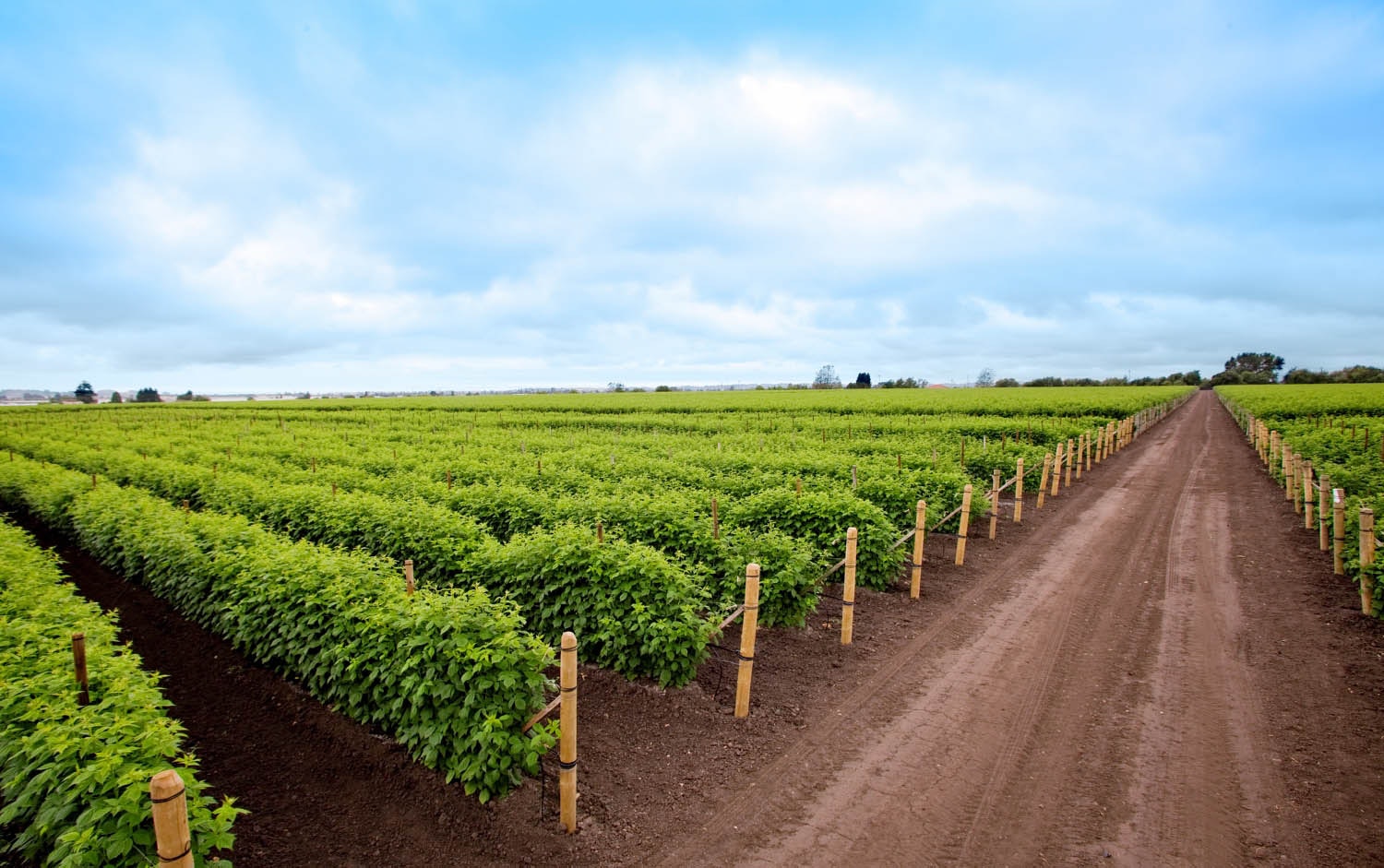Recipes
Growing Raspberries the Driscoll's Way: A Story of Hidden Flavor Potential

When you think of fresh raspberries , what’s the first thing that comes to mind? A bright pink color? A soft and delicate texture? A sweet and fruity flavor? We sat down with Fred Cook, Driscoll’s R&D Director, to talk about the history and future of our Raspberry Breeding Program, and all the surprises in between.
Let’s go back in time. What kind of a plant were raspberries a hundred years ago, and how have raspberries changed in the last hundred years?
“If you go back to the early 20th century, raspberries were picked and eaten fresh off the plant. You wouldn’t have found raspberries in a grocery store in the 1920s because the shipping, refrigeration, and all the things you need weren’t really there. If anyone was growing and selling raspberries locally, they were sold down the street at the local store for a month or two out of the year. They’d produce a few berries in the summer and that's all you'd get,” says Fred.
Beginning in the 1930s, a small group of plant breeders wanted to change that.
“There were some crosses made in the 1930s, but nothing worked and they couldn’t make it happen,” Fred tells us. “Someone was clever enough to keep these plants—there was a house that had these raspberries in the yard for many years. Then sometime in the 1970s, one of those varieties was resurrected from the yard and multiplied, starting an industry,” Fred shares.

“In the 1970s, breeding started at Driscoll’s and it was very hard—one failure after another. Raspberry plants were such a difficult crop to commercialize and the older varieties were so delicate. But Miles Reiter had a vision and he just kept at it, and finally we had some breakthroughs in the 1990s. I once heard Miles say that the goal was to make these raspberries so good, you can’t help but eat them before you get them to the fridge.”
Tell us more about Driscoll’s breakthrough raspberry variety, Maravilla, and what makes Driscoll’s Maravilla raspberries so special.
“Maravilla was an outlier—a total needle in the haystack. It’s a beautiful, glossy berry. It doesn’t mold, it doesn’t darken. It’s got a pretty good fruit size, and the yields are pretty good on the plant—it’s a very healthy plant. Maravilla raspberries aren’t too sweet, aren’t too sour, and have a consistent flavor,” Fred says with a smile. All of these great traits about the famous raspberry lead us to our next question.

Are Driscoll’s raspberries genetically modified?
“No, we’re not doing GMO at all ,” Fred says simply. "It's all very natural, what we do. It's all old fashioned. It's plant breeding , like people did with wheat two thousand years ago. It's the same thing.”
Raspberries are known for being a persnickety plant with very delicate fruit. What life lessons have you learned from raspberries?
“Persistence—and you just have to be steady. Wins are going to be slow and take time. I think that’s true with just about everything we do, really. You have to steadily work at what you want to improve and don’t expect something in a month. Give yourself years, maybe, or decades.”

What’s next for Driscoll’s raspberry program?
First, Fred shares his excitement for what’s on the raspberry’s horizon.
“The hidden potential for Driscoll’s raspberries is enormous—that’s part of what makes this fun, is you just don’t know what’s around the next corner,” he says. “What I can see is a big flavor jump with Maravilla while keeping all the other characteristics—the size, the sturdiness, the yield, the timing. I’ve seen tens of thousands of different individual berries, so I appreciate them all and see the potential in all of them. It’s fun.”
Fred concludes our interview by sharing his excitement for the future of the raspberry program, “Nothing’s standing still in the world of agriculture, and in the world of berries, things are very in motion.”
Want to know more about Fred and his work in our Raspberry Program ? Watch below.
Check out Driscoll’s other breeding programs and the Pursuit of Flavor.